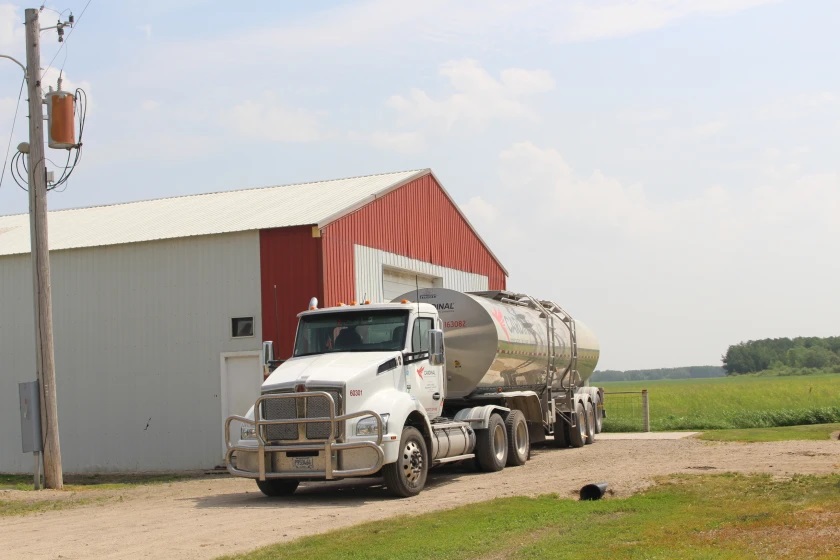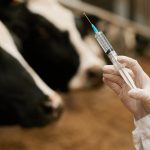
Currently, the United States falls behind New Zealand and the European Union in dairy exports. However, Krysta Harden, president and CEO of the U.S. Dairy Export Council, predicts that could change.
After a slow year last year, dairy exports from the United States are growing.
“It is a very exciting time to be in dairy, frankly, in our country,” said Krysta Harden, president and CEO of the U.S. Dairy Export Council. “We are looking at the rest of the world, either they are producing dairy and don’t have enough and need more for their own nourishment for a healthy and nutritious diet, or they are looking to grow dairy in their diet.”
When the U.S. Dairy Export Council was founded in 1995, Harden says they were only exporting between 3-5% of the nation’s total dairy production. Now, it is between 16-20%.
“We love our dairy here there’s no doubt about it, but we’re already in 96% of the households. So, for us to grow as an industry, we need to look for markets outside of the U.S. and we’re very committed to doing so,” Harden said.
Currently, the United States ranks as the No. 3 exporter of dairy in the world following New Zealand and European Union. But Harden thinks the United States could become the world’s largest dairy exporter in the future. The latest export data from 2023, shows New Zealand exported $6.8 billion in dairy products. The U.S. sold $2.6 billion in dairy products that year.

“The scenario, I think, is really there for us and U.S. dairy,” she said. “We are a big country with a lot of natural resources, including land, water and proximity to markets. So, we are very poised for that.”
There is dairy production happening in every state in the nation.
“Most people don’t realize that,” Harden said. “So, the diversity of production is also helpful.”
Dairy farms across the United States have become more advanced through new technologies.
“Our dairy farmers are very adaptive to new technologies and innovations,” Harden said. “We’re committed to sustainability. We’re a good neighbor. We are good for people, good for community and good for the planet.”
Harden said the United States government support of dairy gives the nation an advantage compared to some competitors.
“We also have a lot of help from our own government with incentives, instead of the stick that some of our competitors are feeling, whether it’s a regulation or hurdles they have to overcome. It seems like sometimes their government wants them out of business, well, that’s not the same here in the U.S.,” she said. “A lot of the programs are helpful, we have USDA, we feel like is a great partner around the world helping us to open markets, to market U.S. products. So, I think we are just poised for growth.”
Younger people are starting to be interested in getting back into the dairy industry, something Harden says is a good thing for the future.
“Our young people want to be a part of growth. They want to be a part of nourishing the world and they see that dairy is a great way to do that,” she said. “That is why I am most optimistic, and I see really the enthusiasm now and the energy in the dairy industry maybe we didn’t have just a few years ago.”
However, there will be some challenges to get the United States up to that No. 1 exporter spot. One of Harden’s concerns is encroachment.
“I think as folks move to the country and don’t understand that dairying happens every day and you have to deal with waste products, and you have issues, sometimes it’s just that simple in your community,” she said.
There is also the issue of countries not wanting to trade.
“They are putting up artificial barriers on our products that are not just tariffs, but also other standards and other issues that are limiting us being able to get into markets,” Harden said. “So, we have to be very innovative. We have to work with other governments and other processors in different countries. This is something that happens all the time so we have to really be prepared to deal with the challenges that our farmers might have, not only here producing, but actually getting into these markets where there is kind of a protectionist society.”

The United States does not export fresh dairy, but it exports dairy products like cheese, whey and milk powder. Mexico is the largest market for United States dairy.
Harden said growing exports involves communication and education.
“Helping and being on the ground, talking to consumers, talking to purchasers, being in retail, as well as food service, helping consumers and chefs and others understand how to use dairy in the diet,” Harden said.
The dairy industry, like a lot of areas of agriculture, has seen consolidation.
“A lot of the generations that had dairies their whole life, their families did not want to come back to the dairy, they sold to a neighbor, or a friend, or families consolidated. That is continuing to happen as it is across U.S. agriculture,” Harden said.
Harden said many small dairies require off-farm jobs to survive. But that has impacted production. She says we will probably continue to see fewer dairies, but a stable or increased production of milk and dairy products.
“But our cattle population remains stable and production increases. So, we’re doing something right, as well,” she said.
You can now read the most important #news on #eDairyNews #Whatsapp channels!!!
🇺🇸 eDairy News INGLÊS: https://whatsapp.com/channel/0029VaKsjzGDTkJyIN6hcP1K























